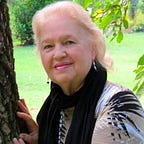Jumping Off the Cliff of Classic Beginnings
Four tips for grabbing your reader’s attention
How important is the beginning of a story? If you can’t capture your reader’s attention with the beginning, they won’t stick around for the middle or the end, no matter how well written. Give some extra attention to your beginning and it will pay off in more readers and hopefully, more paychecks.
There are plenty of classic beginnings in stories and books to look to as good examples of beginnings that have stood the test of time. Charles Dickens’ historical novel about the French Revolution A Tale of Two Cities begins with: “It was the best of times, it was the worst of times, it was the age of wisdom, it was the age of foolishness. . .” Short stories have their classic beginnings, as well. Take Mark Twain’s “A Dog’s Tale” — “My father was a St. Bernard, my mother was a collie, but I am a Presbyterian.”
Note how Dickens pulls you into his tale of twos by taking two things and comparing them right off the bat (it was the best of times it was the worst of times) and how Twain states two similar facts related to dogs, then throws in a third that could only be human. You have to read more to see if this is truly a dog’s tale or a human tale.
If you type story beginnings into a search engine, you will get a long list of possibilities for every type of writing, from horror ideas to mysteries to children’s books and stories.
After years of writing hundreds and hundreds of articles, however, I have decided my beginnings usually come about in four basic ways.
ONE: I try to pick out something new or different about my subject. If you give readers a new angle, a new piece of information, they will read it, even if it’s about Lincoln, one of the most written about subjects of all time. So, if your subject is well-known, give the reader new information; if not well-known, give your reader a reason to care; a reason to keep reading, by picking out the most interesting (or, most unusual) thing about your subject.
When I tried to find the right words to describe a local man and his special Christmas decorations, I began with what everyone knows about Christmas, “Leave your air-filled snowmen and reindeer at Wal-Mart. Keep your tinselly trees and glitzy ornaments in the attic. Try one year of decorating for Christmas with ordinary everyday items that you have on hand. Now keep it up for more than 25 years.” That beginning sums up what the article is about. . .. a man making decorations instead of buying them. Surprise your reader, if possible, or at least inform him of something he might not know.
TWO: When I’ve gathered all my notes on a topic I am about to write, I look for something that sets this subject apart, especially a quote I may have captured. Maybe it’s something they have in common with someone famous or maybe it’s something they said about their job or hobby. Many times, that “something’ will jump out at you and you’ll have no doubt of how you want to begin the piece, but at other times you’ll have to do more research or digging to find the golden nugget. When I wrote a dog story about a stray we found, I used my husband’s quote to me to begin the piece. “He followed me home,” Chuck half smiled, then shrugged, as if he had nothing to do with the big brown blob at his feet. “I thought we could call him Zeke.”
You want the beginning to make a statement, or, ask a question, shock, scare, or excite, as well. When I wrote about Dolly Parton’s Dollywood Theme Park in Sevierville, TN, for Ford Times It wasn’t just a theme park I was writing about but I wanted everyone to know what kind of impact it had on the community. “It’s as country as a Tennessee barn dance and as colorful as a Fourth of July fireworks display. “It’s as “down-home” as grits and gravy and as gauche as rhinestone-studded boots. It’s Dollywood — superstar Dolly Parton’s way of “bringing something home.”
THREE: Keep it relevant and short. Try comparing your subject with something people are more familiar with. When I wrote a travel piece about driving thru the Sequatchie Valley of TN. I started with, “Dropping off the Cumberland Plateau into the Sequatchie Valley is a little like riding a roller coaster. It leaves you breathless and not quite sure what to expect next.” I think of this beginning whenever I want a good example because it is only two sentences, yet, if you’ve never been to the Sequatchie Valley, chances are you have been on a roller coaster, so you have some idea of what that drive will be like. So, by comparing where I wanted the reader to go, with somewhere they had already been, I captured their imagination and hopefully made them read on.
FOUR: Finally, keep it short — one to four sentences is ideal.
Of course, the only real rule about beginnings is there are no rules. If you can make it work, do it, but keeping these tips in mind can save you time and effort. Because, when you get to the end you will want to tie the piece back to the beginning, like this.
Jumping off the cliff of classic beginnings is easy as long as you:
· Give the reader new or unusual information.
· Start with something special, such as a quote.
· Keep it relevant.
· Keep it short.
Put a little thought and hard work into where you want your piece to go, and it will lead you to a great piece of writing.
